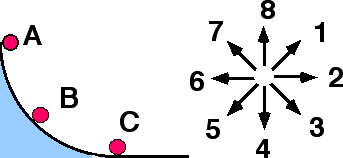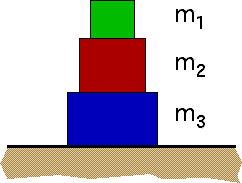Goal: Hone the concept of force, classify forces as contact and action-at-a-distance.
Source: UMPERG
A baseball is struck by a bat. While the ball is in the air, what
objects exert forces on the ball?
- Earth
- Bat
- Air
- Bat, Air
- Earth, Bat
- Earth, Air
- Earth, Bat, Air
- There are no forces on the ball.
- None of the above





Commentary:
Answer
(6); the earth’s gravitational force (an “action-at-a-distance” force),
and air resistance (a contact force) are the only two forces being
exerted on the ball while in the air.
Background
It is common for students to think that motion requires a force; in some
cases this misconception is more specific, namely, that motion requires
a force in the direction of motion. For this assessment item, the
misconception manifests itself in the belief that there is a “force of
the bat” that propels the ball up during flight.
Questions to Reveal Student Reasoning
Ask students to state what forces are being exerted on the ball and what
object exerts each force.
How do you know when a force is being exerted by one object on another?
Do the sizes of the forces change? Do the directions of the forces
change? Describe how.
Do you have any control over the force of the bat on the ball? Can you
make it larger or smaller or change its direction once the ball is
flying through the air?
Suggestions
Ask students if they have a way of exerting a force on an object without
touching it. Invite them to move an object in the front of the room
without leaving their seats and touching the item.
If Newton’s Second Law has been introduced, attempt to relate the forces
exerted on the ball to the ball’s acceleration. See if students agree
that, if air resistance can be neglected, the ball has a constant
acceleration of 9.8 m/s2 toward the earth during its entire
trajectory. If they agree ask what they can conclude about the net
force on the ball while airborne.